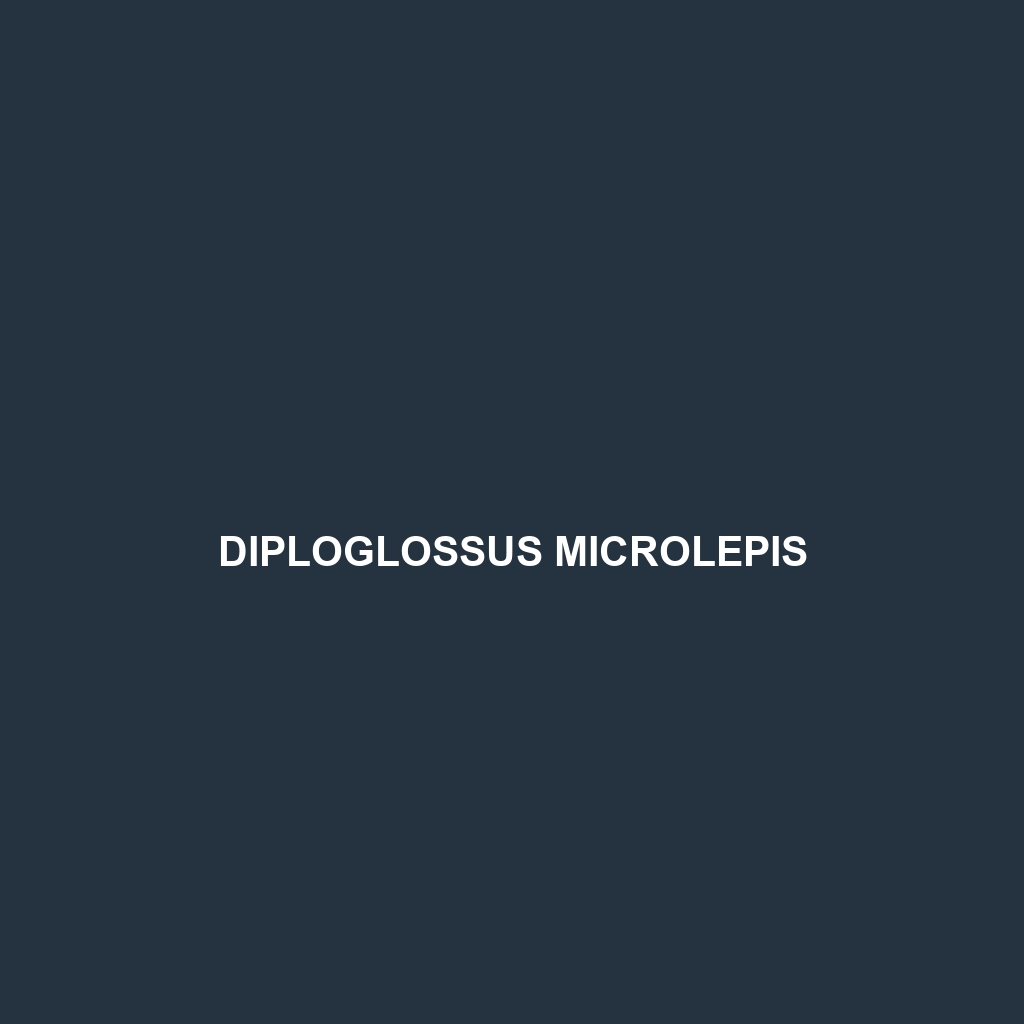Species Description: Diploglossus microlepis
Common Name: Diploglossus microlepis
Scientific Name: Diploglossus microlepis
Habitat
Diploglossus microlepis, commonly known as the central American skink, is primarily found in the humid tropical forests of Central America, particularly in countries like Costa Rica, Panama, and parts of Nicaragua. This species thrives in moist environments, often inhabiting leaf litter and forest floors, where it enjoys a microhabitat rich in organic matter and humidity.
Physical Characteristics
This skink typically reaches a length of approximately 15 to 20 centimeters. Diploglossus microlepis is characterized by its smooth, elongated body, often exhibiting a coloration ranging from dark brown to olive green, with lighter stripe patterns along its sides. The species possesses distinctive small, smooth scales, and its limbs are notably reduced, giving it a streamlined appearance well-suited for burrowing.
Behavior
Diploglossus microlepis is primarily diurnal, becoming active during daylight hours. It is known for its burrowing behavior, making it adept at navigating through leaf litter and soil. This species is generally solitary, though it may occasionally be found in pairs during the breeding season. Its movement is typically slow, favoring stealth over speed, which aids in avoiding predation.
Diet
The diet of Diploglossus microlepis consists mainly of insects and other small invertebrates. It utilizes its keen sense of smell to locate prey and is known to consume various arthropods such as ants, termites, and small earthworms. This diet is crucial for its growth and reproductive success, as it helps maintain energy levels for foraging and burrowing activities.
Reproduction
Diploglossus microlepis breeds typically during the rainy season, which varies by region but generally occurs from May to September. Females lay a clutch of 3 to 7 eggs buried in moist soil or leaf litter, providing a suitable environment for incubation. The young skinks exhibit independent behaviors shortly after hatching, receiving no parental care.
Conservation Status
The current conservation status of Diploglossus microlepis is classified as vulnerable according to the IUCN Red List. Habitat destruction due to deforestation and land conversion poses significant threats to its population. Conservation efforts are essential to preserve its natural habitats and promote biodiversity in the regions it inhabits.
Interesting Facts
One fascinating aspect of Diploglossus microlepis is its ability to regenerate lost tail segments, a common trait among many lizard species. Additionally, this skink plays a crucial role in soil aeration through its burrowing activities, contributing to the health of its ecosystem.
Role in Ecosystem
Diploglossus microlepis serves as an important predator of insects within its habitat, helping to control insect populations. In turn, it serves as prey for larger animals, maintaining the balance of the local food web. Its ecological role underscores the necessity of conserving its populations and habitats for ongoing ecosystem health.
